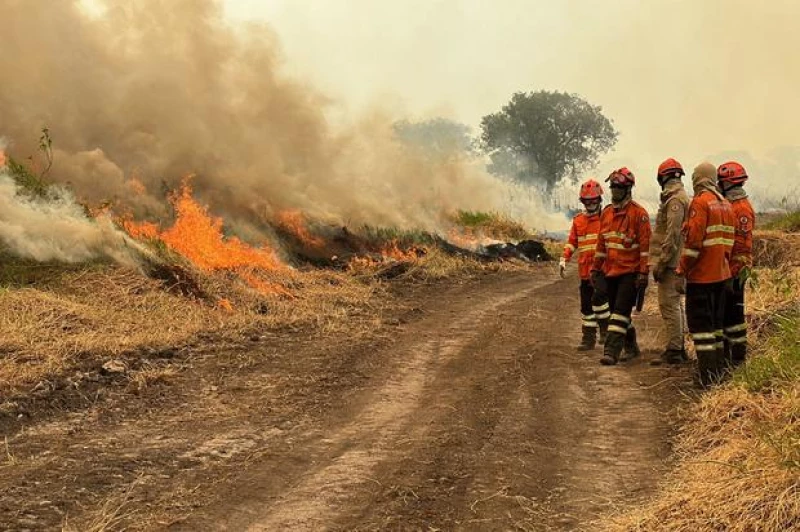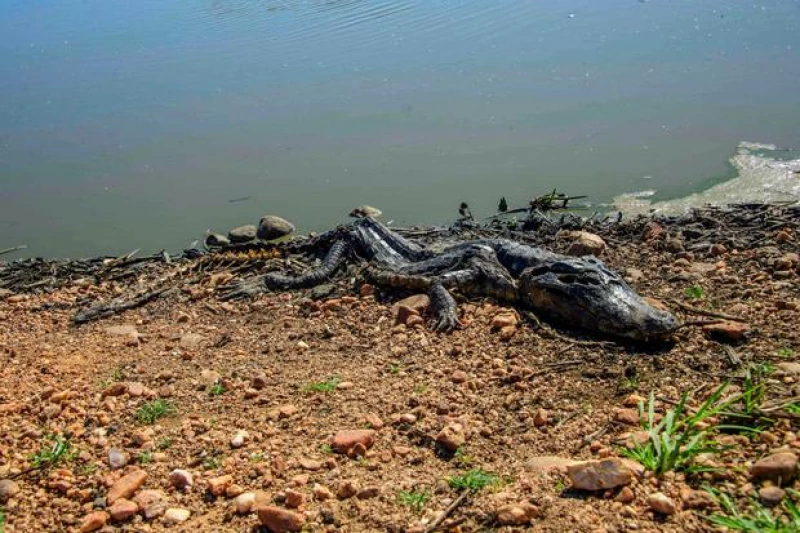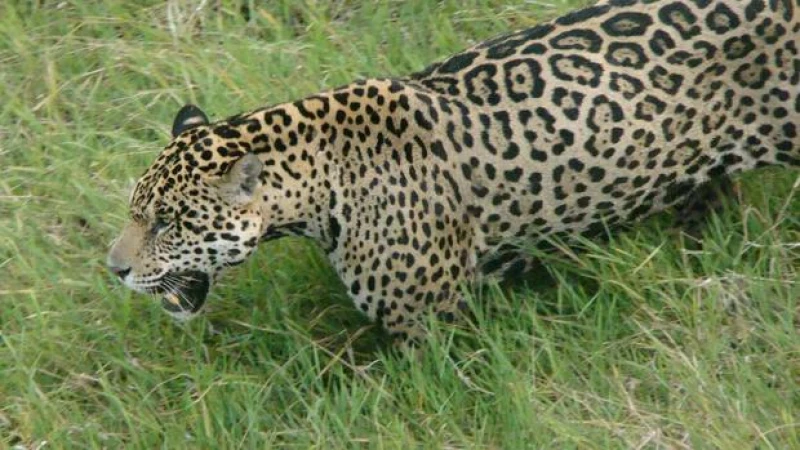Wildfires Threaten Pantanal Wetlands in Brazil
Poconã, Brazil — The Pantanal wetlands in western Brazil are famed as a paradise of biodiversity, but these days they have enormous clouds of smoke billowing over them, as raging wildfires reduce vast expanses to scorched earth.
Known for its lush landscapes and vibrant wildlife, including jaguars, caimans, macaws and monkeys, the Pantanal is home to the world's biggest tropical wetlands and, in normal times, a thriving ecotourism industry.
But in recent weeks it has been ravaged by fires that are threatening its iconic wildlife, as Brazil suffers through a southern hemisphere spring of droughts and record heat.

There were 2,387 fires in the Pantanal in the first 13 days of November, an increase of more than 1,000 percent from the entire month of November 2022, according to satellite monitoring by Brazilian space research agency INPE.
"The situation is completely out of control. And between the heat wave and the wind, it's only going to get worse," says biologist Gustavo Figueiroa, 31, head of the environmental group SOS Pantanal.
"The Pantanal is a region that's used to fires. Normally, it regenerates naturally. But this many fires isn't normal."
The Pantanal Devastated by Unprecedented Fires
The Pantanal, located at the southern edge of the Amazon rainforest, has been devastated by unprecedented fires in 2019. Stretching from Brazil into Bolivia and Paraguay across more than 65,000 square miles, the region has been hit hard by drought this year, resulting in normally flooded areas being reduced to shriveled ponds.
Along the dirt highway across the region, known as the 95-mile "Transpantaneira," a small group of caimans can be seen trying to swim in the shallow water, while nearby, the corpse of another caiman sits rotting on the bank.

Elsewhere in the Pantanal, a dead porcupine lays on a carpet of ash in the charred remains of what was once a forest.
Veterinarian Aracelli Hammann, who is volunteering with a wildlife rescue group, believes the porcupine died of smoke inhalation. The grim find was made in the Encontro das Aguas park, which is home to the world's largest jaguar population. According to environmental group ICV, nearly one-third of the park has been hit by fires in the past month.
The other main front that firefighters are battling is in the Pantanal National Park to the southwest, where fires have burned 24 percent of the surface area. There is concern that the two fire fronts are about to merge. Firefighters are facing logistical challenges, as many hard-hit areas are only reachable by boat.
According to experts, the fires in the area are primarily caused by human activity, particularly the practice of burning land for farming purposes. The current climate conditions have only exacerbated the situation.
Furthermore, experts warn that even when animals manage to survive the flames, they are at risk of starvation.

"We have observed a variety of dead animals, including insects, reptiles, amphibians, and small mammals, which are unable to escape," explains Figueiroa. "These animals are part of an invisible food chain, and each death has a ripple effect that extends all the way up to the apex predator, the jaguar."
In a clearing, a group of monkeys eagerly devours bananas and eggs that have been left for them by volunteers.
"We refer to it as 'gray hunger' - when the fire reduces all vegetation to ashes and there are no natural food sources remaining in the area for the surviving animals," says Jennifer Larreia, 33, the leader of the animal rescue group E o Bicho.
During the wildfires in 2020 that also devastated the region, Larreia's organization provided 300 tons of fruit to animals over the course of five months.







